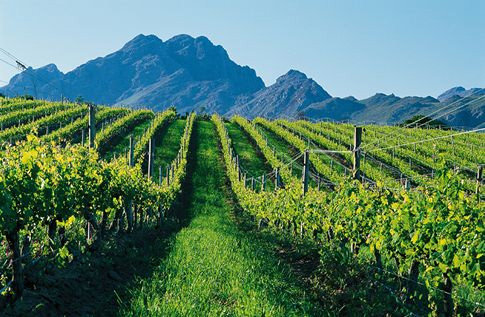Due to favourable weather conditions (first time in more than four years!) the 2003 crop was the largest ever received by Nederburg.
Minor problems were experienced as a result of diseases, which resulted in the overall quality of the wines as excellent.
WEATHER CONDITIONS
The season leading up to the 2003 crop was more favourable than in previous years. The bunch setting period in November 2001 was favourable with hot and sunny conditions. This had a huge impact on the large crop. This was followed by a reasonably cold and wet winter with almost no delayed budding problems. Chardonnay, which is very susceptible to delayed budding, had its best crop in years.
September to November was fairly cool but, in contrast to the heavy rains and resulting disease problems of the previous year, the rainfall was average and the vineyards mostly healthy with few crop losses during the delicate flower-to-setting period. Gale force winds caused minimal damage on a few isolated farms in Stellenbosch and Paarl.
The ripening period of grapes (January and February) was cooler and drier than long-term. Apart a few hot days, no heat waves were recorded. This cool weather with many "optimal photosynthesis hours" (below 30 °C) impacted positively on berry size, as well as sugar, colour and flavour development and was conducive to overall wine quality. In some of the dryland areas such as Malmesbury, Darling and Philadelphia, some blocks suffered from a bit of water stress, but this was alleviated by the cool ripening period leading up to harvest and the quality from most of the farms was still excellent, especially the red wine grapes.
Apart from good rains in March, the after harvest period was exceptionally dry and vineyards in the dryland areas suffered somewhat from water stress.
PESTS AND DISEASES
Due to excellent weather conditions and good spraying programs after the downy mildew and botrytis losses of 2002, very few problems were experienced with fungi diseases.
Mealy bug still poses a problem as well as the invasion of new pests such as kalanders and snails, which are difficult to keep under control. Despite these problems the grapes were healthy and there was no real negative impact on either crop or quality.
THE HARVEST
The 2003 harvest commenced a few days earlier than in 2002. It was a good quality season with the wines producing excellent fruit and colour. Shiraz did exceptionally well which resulted in the wines from the West Coast areas standing out. The hot days of late February had resulted in minimal negative impact on wines as most of the earlier varieties were already harvested as was most of the Sauvignon blanc. The rain in March led to a late harvest of varieties such as Cabernet with a lower sugar than normal being measured.
The 2003 season for Nederburg was a good quality year with enough healthy grapes, harvested at optimum ripeness which will produce premium wines.
The new cellar capacity of Nederburg was well utilised with the bigger crop due to the fact that grapes could be handled optimally.
Despite the big crop Nederburg can expect premium wines due to a cool ripening period and good cooperation from growers with their viticultural practises.

 quicksearch
quicksearch






